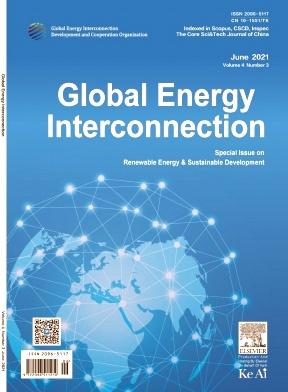A review of photovoltaic/thermal (PV/T) incorporation in the hydrogen production process
IF 2.6
Q4 ENERGY & FUELS
引用次数: 0
Abstract
Integrating the photovoltaic/thermal (PV/T) system in green hydrogen production is an improvement in sustainable energy technologies. In PV/T systems, solar energy is converted into electricity and thermal energy simultaneously using hot water or air together with electricity. This dual use saves a significant amount of energy and officially fights greenhouse gases. Different cooling techniques have been proposed in the literature for improving the overall performance of the PV/T systems; employing different types of agents including nanofluids and phase change materials. Hydrogen is the lightest and most abundant element in the universe and has later turned into a flexible energy carrier for transportation and other industrial applications. Issues, including the processes of Hydrogen manufacturing, preservation as well as some risks act as barriers. This paper provides an analysis of several recent publications on the efficiency of using PV/T technology in the process of green hydrogen production and indicates the potential for its increased efficiency as compared to conventional systems that rely on fossil fuels. Due to the effective integration of solar energy, the PV/T system can play an important role in the reduction of the levelized cost of hydrogen (LCOH) and hence play an important part in reducing the economic calculations of the decarbonized energy system.
光伏/热(PV/T)技术在制氢过程中的应用综述
将光伏/热(PV/T)系统集成到绿色制氢中是可持续能源技术的改进。在PV/T系统中,利用热水或空气与电一起将太阳能同时转化为电能和热能。这种双重用途节省了大量的能源,并正式对抗温室气体。文献中提出了不同的冷却技术,以提高PV/T系统的整体性能;采用不同类型的药剂,包括纳米流体和相变材料。氢是宇宙中最轻、最丰富的元素,后来成为运输和其他工业应用的灵活的能源载体。氢的制造过程、保存以及一些风险等问题都是障碍。本文分析了最近几篇关于在绿色制氢过程中使用PV/T技术的效率的出版物,并指出了与依赖化石燃料的传统系统相比,其提高效率的潜力。由于太阳能的有效集成,PV/T系统可以在降低氢的平准化成本(LCOH)方面发挥重要作用,从而在减少脱碳能源系统的经济计算方面发挥重要作用。
本文章由计算机程序翻译,如有差异,请以英文原文为准。
求助全文
约1分钟内获得全文
求助全文
来源期刊

Global Energy Interconnection
Engineering-Automotive Engineering
CiteScore
5.70
自引率
0.00%
发文量
985
审稿时长
15 weeks
 求助内容:
求助内容: 应助结果提醒方式:
应助结果提醒方式:


